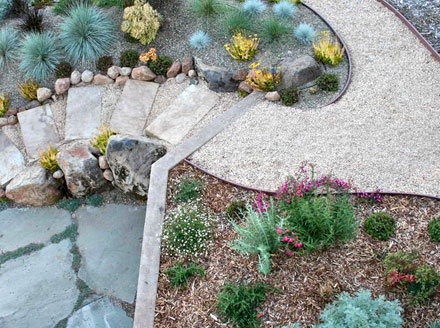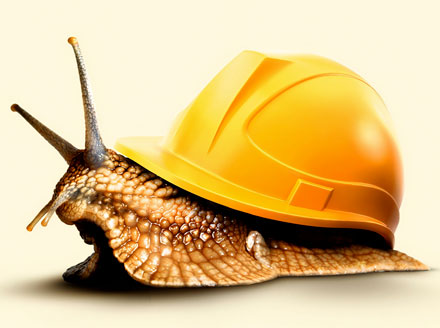Share This Post:
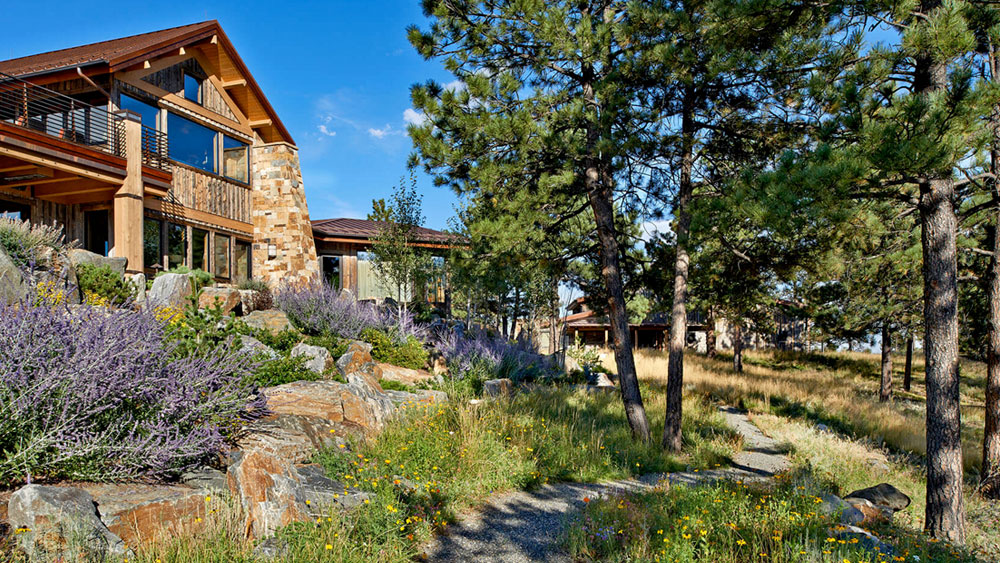
Image Credit: Lifescape Colorado
Low, Not No, Maintenance Xeriscape
Low Maintenance Xeriscape
This is post 7 of 7 in the series Xeriscaping Isn't Just For The Desert
This is post 7 of 7 in the series
Xeriscaping For Any Climate
LANDSCAPING | Carolyn Feinstein | June 12, 2020
LANDSCAPING | Carolyn Feinstein
June 12, 2020
And so we've come to the end, the last of the seven principles of xeriscaping, maintenance. Although xeriscapes are low maintenance, they certainly are not no maintenance. When you have first installed your xeriscape, it will require much of the same level of care as a new garden. You will need to water it to ensure the plants take root, weed for any stray unwanted plants that pop up, and cut back the perennial plants as the seasons change.
The mulch, organic and inorganic, will settle over time, requiring additional material to be added. Wood mulches may need to be replenished annually as you also have to factor in the decomposition and fading. Periodically test various areas around the plantings for the depth of the mulch (at least 2" for rocks, and 4" for wood). That depth is important to conserve moisture in the soil and prevent weeds from getting sunlight. The irrigation zones, especially with a traditional drip system, only provide water to targeted areas, further reducing your chance of weeds by starving them of moisture. If a particular area has an outbreak of weeds or grass (where you don't want it), be sure you dig out the roots of the invading plants before replacing the mulch.
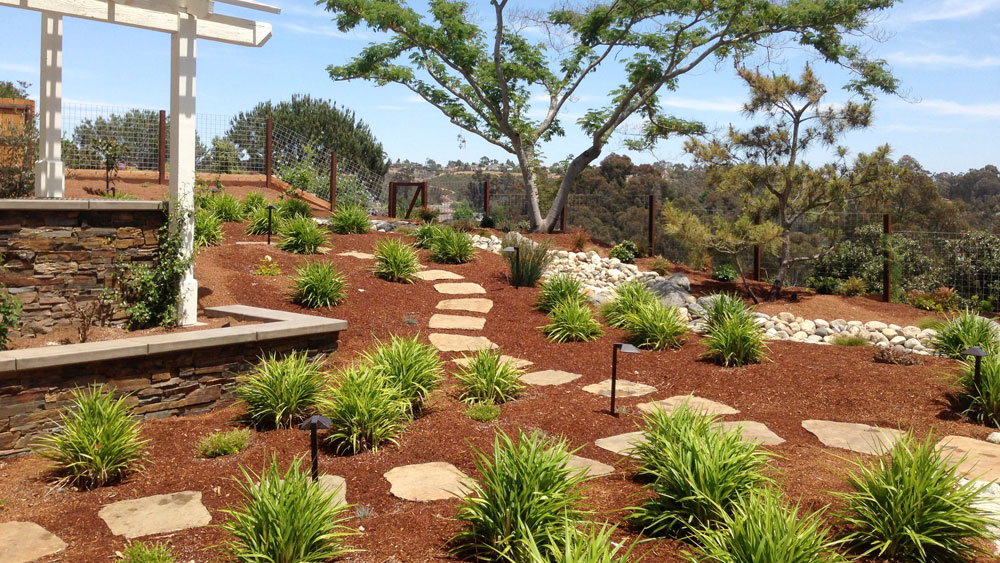
Image Credit: Houzz
With rock mulches, you will need to make sure the organic matter from the surrounding areas, like leaves and twigs, is removed from the mulch. As that matter decomposes, it will create areas between and beneath the stone where weeds can thrive. I am surrounded by trees that drop all of their leaves directly into my stone mulch. I found that a shop vac set to act as a leaf blower is strong enough to move the leaves, but not so strong that it will move 1-inch stones. A traditional leaf blower was just too powerful to get the job done. Taking the time to do this every so often is well worth avoiding the hassle of having to add layers of mulch and pulling weeds.
Native xeric plants will not require fertilizer. They are acclimated to your area already and can survive given the existing nutrients in the soil. If you have non-native species and turf grass, consider adding compost or compost tea in place of chemical fertilizers. These are a great source of nutrients that only need to be applied once or twice a year at most. An added benefit is that they do not harm beneficial insects like ladybugs and praying mantis that feed on pests.
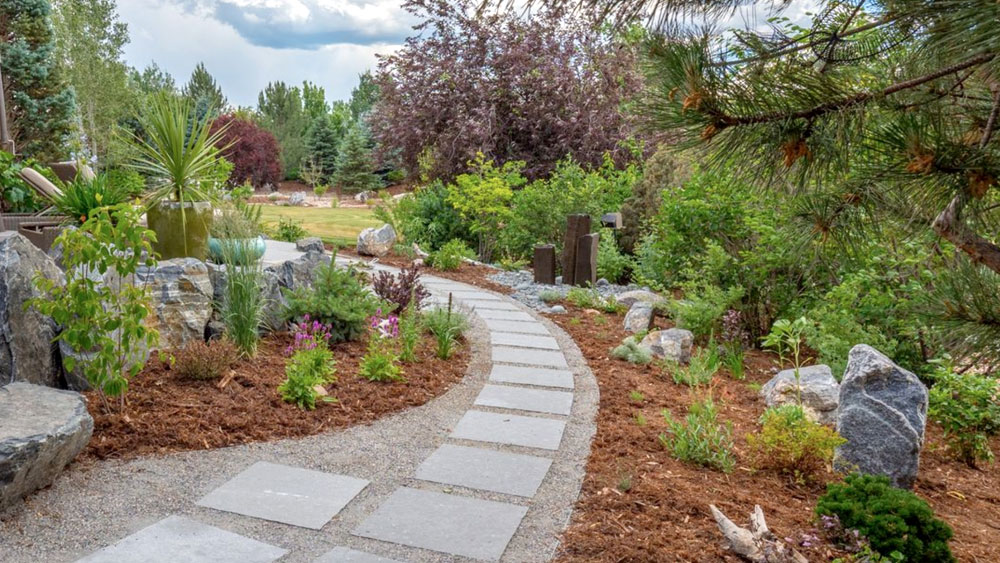
Image Credit: Ecoscape Design
Check your irrigation system regularly for leaks. As the weather changes, the amount of water your plants need from irrigation will change as well. Adjust your automatic system seasonally and make sure your rain sensor is in good working order. No need to pay for the drip system to run when it just rained.
If you have turfgrass, only mow when the grass is 1/3 of the height above where you want it to be. This will help protect against sunburn and water loss. Reducing the amount of water you give the grass will decrease your mowing frequency. Just make sure it doesn't dry out completely. Remember, in irrigation you are aiming for infrequent, but deep watering.
As the xeriscape becomes more established, the need for maintenance will decrease. All of the tools and layouts you have created throughout the design process will serve as resources to strengthen your xeriscape as time goes on. The mulch will prevent weeds and evaporation, and the irrigation can be reduced as the plants take root. Heading outside to take care of your xeriscape will become more of a beautifying exercise than chore.




